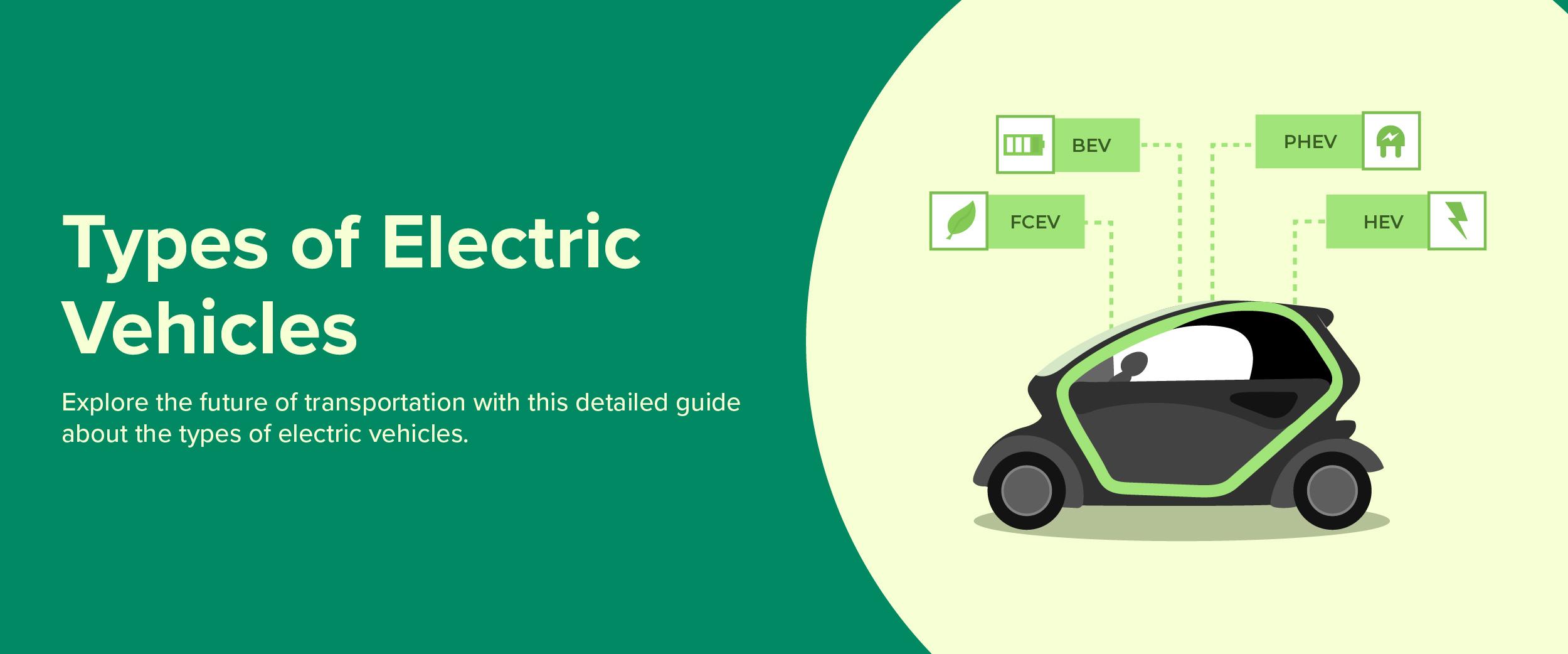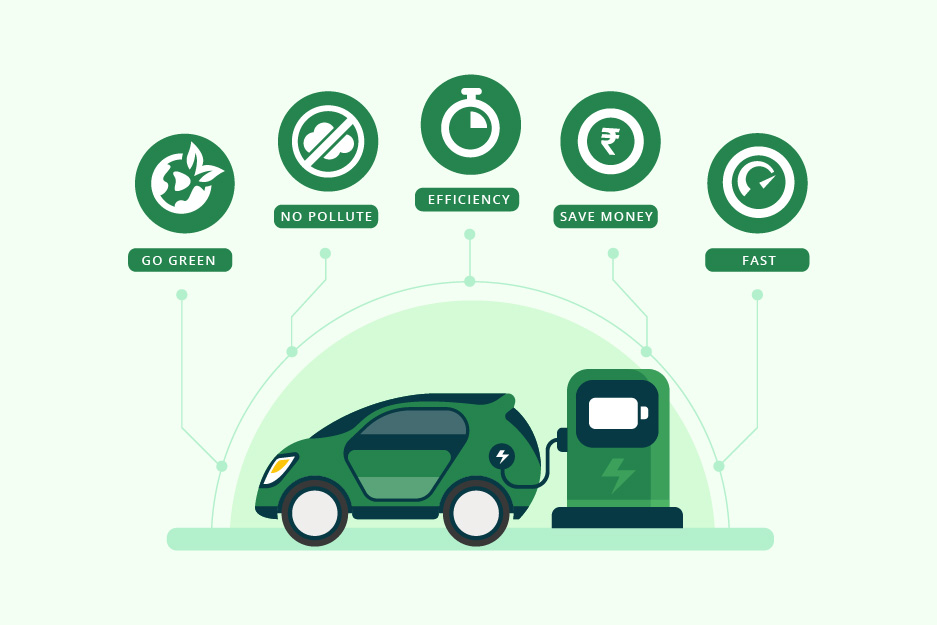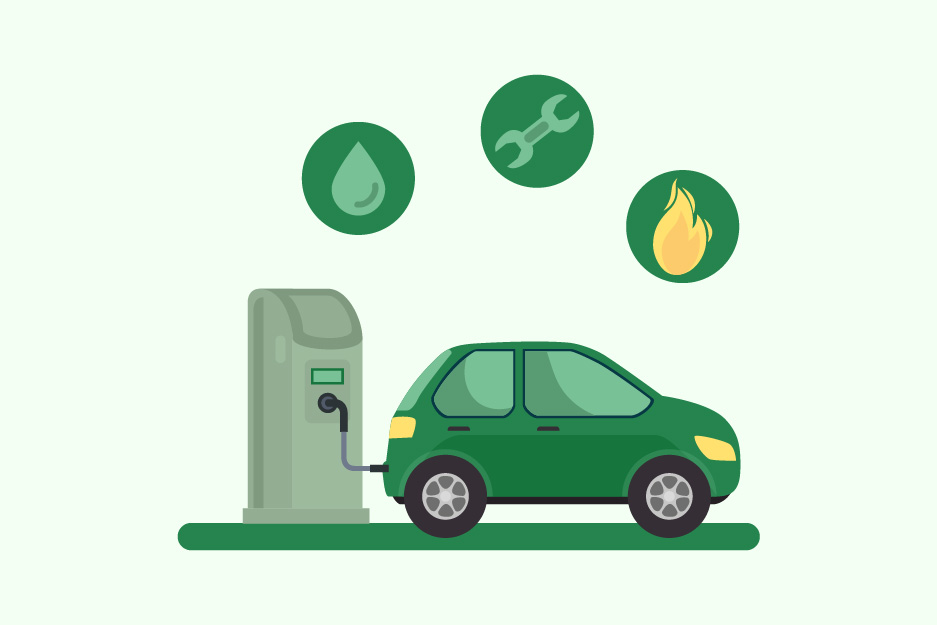Types Of Electric Vehicles: BEV, HEV, PHEV, FCEV
Did you know India has the third-largest EV sector worldwide? This highly competitive market has increased by 23% in 2022 and is expected to alter the Indian automobile industry in 2023. The expanding trend and desire have compelled manufacturers to deliver several types of electric vehicles to the market, providing customers and potential buyers with various choices. In this blog, we will learn about the various types of EVs, their working, future, and more. So, let’s begin
In this blog, we will learn about the various types of EVs, their working, future, and more. So, let’s begin.
What is an Electric Vehicle?
An electric vehicle is powered by an electric motor instead of an internal combustion engine. It generates power by igniting a mix of petrol and hydrocarbons. Therefore, it is an appropriate substitute for current-generation vehicles. It addresses challenges like rising emissions, global warming, diminishing resource availability, etc.
The concept of electric vehicles has existed around for many years. However, it has received a lot of spotlight in the recent decade. It is because of the increasing carbon footprint and additional environmental repercussions of gasoline-powered vehicles. Take an electric vehicle course if you want to secure an excellent career in this ever-growing industry.
4 Different Types of Electric Vehicles
The following are the four major types of electric cars available in the market.
- BEV or Battery Electric Vehicle
- HEV or Hybrid Electric vehicle
- PHEV or Plug-In Hybrid Electric Vehicle
- FCEV or Fuel Cell Electric Vehicle
Let’s study each of these types of EVs in detail.
1. Battery Electric Vehicle (BEV)
A battery-powered electric vehicle, or an all-electric vehicle, is powered by a battery with an electric power unit. These EVs lack an internal combustion engine. Electricity is stored in a massive battery pack and supplied through a connection to the power line.
Primary components of a BEV include:
- Battery
- Module
- Control
- Train
- Drive
- Inverter
- Electric motor
How does a BEV Operate?
A BEV operates in the following way:
- Power is converted from a DC battery to an AC battery for the electric motor.
- The accelerator pedal transmits an electrical signal to the controller to adjust the car’s pace. This alters the frequency of the AC passing from the inverter to the motor.
- The motor is linked and turns the wheels using a gear.
- When the electric car is decelerating, the motor switches to an alternator and produces electricity. This electricity is delivered to the battery.
Examples
Here are some examples of BEV or battery-electric vehicles:
- BYD Atto 3
- Mahindra E Verito
- Hyundai Kona
- Tata Tiago EV
- MG ZS EV
- Kia EV6
- BMW iX
- Mahindra XUV300 EV
- Tata Tigor EV
- Mercedes-Benz EQB
- Tata Nexon EV
Also Read: Advantages Of Electric Vehicles
2. Hybrid Electric Vehicle (HEV)
The hybrid electric vehicle or HEV is sometimes called a parallel hybrid or conventional hybrid.They are among the types of EV powered using an IC engine and a battery-operated motor.
The internal combustion engine in these electric vehicles is fueled by gasoline and several other kinds of fuel, whereas batteries drive the motor. The petrol engine and the motor spin the gearbox, which powers the wheels to move.
HEV’s Primary components include:
- A battery cell with a control unit and an inverter
- Electric motor
- Petrol tank
- Engine
- Control module
How does an HEV Operate?
An HEV operates in the following way:
- It operates similarly to regular automobiles, with a fuel container that supplies petrol to the engine.
- There is also another power pack that drives an electric motor. The electric motor and the engine may both drive the gearbox at the same time.
- There is another power pack that drives an electric motor. The electric motor and the engine may both drive the gearbox at the same time.
Examples
Here are some examples of HEV or hybrid electric vehicles:
- Toyota Innova Hycross
- Honda City eHEV
- MG Hector
- Maruti Suzuki Grand Vitara
- Toyota Vellfire
- Hyundai Ioniq 5
- Volvo XC90
- Toyota Prius
- Toyota Camry
- Toyota Urban Cruiser Hyryder


3. Plug-In Hybrid Electric Vehicle (PHEV)
A PHEV, commonly called a series hybrid, contains an ICE and a motor. It is one of the types of electric vehicles with various fuel sources. This can be a regular fuel such as petrol, a substitute fuel such as biodiesel, or a pack of rechargeable batteries to power it. Connecting the battery to an electrical supply or a vehicle’s electric charging point charges it. To learn more about PHEVs and other electric vehicles, you can opt for an in-depth Electric Vehicles Course.
PHEVs feature a minimum of two distinct modes of operation:
- Allele Citric Mode: In this mode, the motor and batteries provide the vehicle’s energy.
- Hybrid Mode: In this mode, both fuel and electricity are utilized.
Some PHEVs can travel for over 70 miles on electricity.
Primary components of PHEVs include:
- Battery
- Electric motor
- Battery charger (if onboard model)
- Engine
- Inverter
- Control module
- Fuel tank
How does a PHEV Operate?
A PHEV operates in the following way:
- They are often electrical and operate on electricity until the battery cell runs out of power.
- Specific models enter hybrid mode once they achieve highway cruising capabilities of 60 or 70 miles an hour.
- Once the battery dies, the combustion engine comes in, and the vehicle functions as a regular, non-plug-in hybrid.
- Along with coupling to an outer power source, PHEV cells can be recharged by a combustion engine or through regenerative braking.
- The engine’s electric motor acts as a generator throughout braking, sending energy to the batteries. Since the electric motor supplements the engine’s power, smaller engines tend to be employed. This increases the efficiency of fuel without compromising effectiveness.
Examples
Here are some examples of PHEV or plug-in hybrid electric vehicles:
- Porsche Cayenne
- Toyota RAV4
- Volvo XC90 Recharge
- BMW 7 Series
4. Fuel Cell Electric Vehicle (FCEV)
FCEVs are also called Fuel Cell Electric Vehicles, Zero Emission Vehicles, or Fuel Cell Vehicles. They are the types of electric cars that employ “Fuel Cell Technology” to generate the electricity required to operate the vehicle. In this type of vehicle, the chemical energy of the petrol is converted directly into electric power.
The primary components of an FCEV include:
- Battery with converter and controller
- Hydrogen storage tank
- Electric motor
- Fuel-cell stack
How does an FCEV Operate?
This is how an FCEV operates:
- While driving, a simple mechanism transfers power through the fuel cell or batteries to the battery-powered motor that runs the car.
- A fuel cell creates power via the electrochemical process of oxygen in conjunction with hydrogen within the vehicle.
- The power flow is managed by an electronic controller, which regulates the torque and speed of the electrically driven motor.
Examples
Here are some examples of FCEV or fuel cell electric vehicles:
- Hyundai Nexo
- Hyundai Tucson FCEV
- Honda Clarity Fuel Cell
- Toyota Mirai


Workings of an Electric Vehicle
EVs are similar to automated vehicles. Different types of electric cars are equipped with forward and reverse functionality. For you to understand it better, given below is how they function.
- The controller gathers and regulates power from the battery and inverter.
- Once the controller is on, the inverter sends electrical power to the motor. This energy is based on the depth of pressure applied to the pedal.
- The rotational motion of an electric motor converts electrical energy into mechanical energy.
- The spinning of the generator’s rotor causes the gearbox to change direction. This causes the wheels to whirl around and the vehicle to undergo motion.
The Future of Electric Vehicles
Electric vehicles have shown to be not just the cleaner option to traditionally powered vehicles but also among the least expensive. Given the growing fuel prices, this is a significant boost toward EV adoption in India.
Some believe that different types of electric vehicles will be ultimately equipped to self-fuel by harvesting energy from their environment. Such cars need fewer repairs and may be fueled by renewable energies like the wind. This is also among the reasons why electric vehicles have immense future possibilities.
Conclusion
The revolution in electric vehicles has begun as the growing number of EVs are already accessible. Learning about the various types of electric vehicles is worthwhile as they become increasingly common. Some EVs run entirely on batteries, whereas others are hybrids with a gasoline engine and an electric motor.







